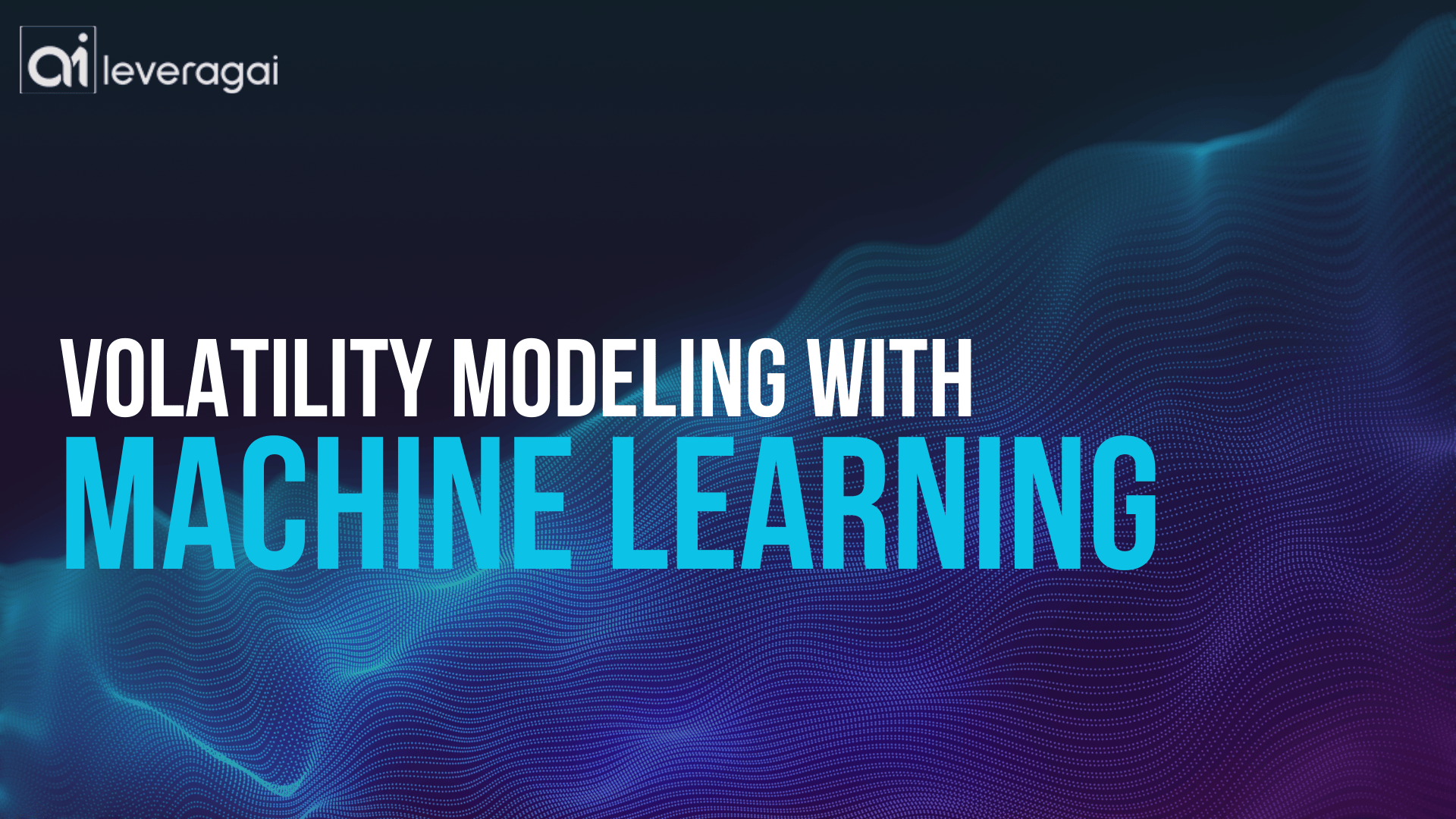Volatility Modeling with Machine Learning: A New Era in Financial Forecasting
In the fast-paced world of financial markets, volatility plays a critical role for traders, portfolio managers, and risk analysts. The ability to understand and predict market volatility can greatly influence decisions related to risk management, asset allocation, and investment strategies. Traditionally, volatility has been modeled using methods like GARCH (Generalized Autoregressive Conditional Heteroskedasticity), which laid the groundwork for financial forecasting. However, machine learning is now transforming this space, providing a higher level of precision and adaptability. In this post, we explore how machine learning, particularly autoregressive models, is reshaping volatility forecasting.
Why Volatility Matters in Financial Markets
Volatility measures the extent of price variation over time and is seen as a key indicator of risk in financial markets. High volatility can lead to significant price fluctuations, which presents both opportunities and risks for market participants. Conversely, low volatility signals more stable prices. Accurately forecasting volatility can improve risk management, optimize portfolio strategies, and enable better trading decisions.
Traditional Models: The Foundation of Volatility Forecasting
For decades, financial experts have relied on statistical models like ARCH (Autoregressive Conditional Heteroskedasticity), developed by Robert Engle in 1982, and its extension, the GARCH model. These models have been effective in capturing time-varying volatility and are widely used in financial time series analysis. Despite their success, traditional models come with limitations. They often assume linear relationships between variables, which may fail to capture the complex and non-linear dynamics of financial markets. Additionally, traditional models can struggle with the large and high-frequency datasets that have become essential in modern finance.
Machine Learning and Autoregressive Models
Machine learning introduces a new dimension to volatility forecasting by leveraging large datasets and identifying complex patterns that traditional models may miss. Among the machine learning approaches, autoregressive models stand out as particularly promising for financial data, which is naturally sequential.
ARIMA (Autoregressive Integrated Moving Average)
.png)
The ARIMA model is one of the most widely known autoregressive models. It combines three elements: autoregression (AR), differencing for stationarity (I), and a moving average (MA) to capture trends. While ARIMA is versatile and can be adjusted to various patterns in time series data, it often requires careful parameter tuning and may not fully account for non-linear relationships.
Autoregressive Neural Networks
Autoregressive Neural Networks (ARNNs) integrate neural networks with autoregressive models, allowing for the detection of more complex, non-linear patterns. ARNNs use past time series data as inputs, which makes them more powerful than traditional ARIMA models when dealing with intricate market behaviors. Neural networks can model non-linear relationships, making ARNNs a robust choice for financial volatility forecasting.
Long Short-Term Memory (LSTM) Networks
.png)
LSTM networks are a type of Recurrent Neural Network (RNN) that has gained traction in time series forecasting. LSTMs are specifically designed to overcome the vanishing gradient problem, which allows them to capture long-term dependencies in data. This is crucial in financial markets, where past events can have lingering effects on future volatility.
Advantages of Machine Learning in Volatility Forecasting
.png)
Machine learning models, particularly those with autoregressive components, provide several key benefits over traditional methods:
Adaptability: Machine learning models continuously learn from new data, making them more adaptable to changing market conditions. This adaptability is essential in highly volatile markets, where historical patterns can quickly become irrelevant.
Non-Linear Relationships: Financial markets are influenced by numerous factors that interact in non-linear ways. Machine learning models can capture these complex relationships more effectively than linear statistical models.
Feature Engineering: Machine learning enables the incorporation of additional data points, such as macroeconomic indicators, sentiment analysis, and even social media trends, which can improve the accuracy of volatility forecasts.
Scalability: Modern financial markets produce massive amounts of data, especially with the rise of high-frequency trading. Machine learning models can scale efficiently, processing large datasets faster and more accurately than traditional methods.
Challenges and Considerations
While the potential of machine learning in volatility modeling is immense, it’s not without challenges:
1.Data Quality: The accuracy of machine learning models heavily depends on the quality of data. Financial data can be noisy and prone to anomalies, necessitating robust preprocessing techniques.
2.Overfitting: Machine learning models, particularly those with high complexity, are susceptible to overfitting. It’s crucial to implement techniques such as cross-validation and regularization to ensure the model generalizes well to unseen data.
3.Interpretability: Traditional statistical models offer transparency and interpretability, which are often essential for regulatory compliance and gaining stakeholder trust. Machine learning models, especially deep learning architectures, can be seen as black boxes. Efforts to improve model interpretability, such as SHAP values or LIME, are vital.
4.Computational Resources: Training complex machine learning models, especially on large datasets, requires significant computational resources.Access to high-performance computing infrastructure becomes a critical consideration.
Conclusion
Volatility modeling is crucial for financial markets, and machine learning is unlocking new possibilities in this area. By combining traditional statistical methods with advanced machine learning techniques, especially autoregressive models, financial professionals can make more accurate and flexible predictions. As machine learning continues to evolve, its role in volatility forecasting will likely grow, offering unprecedented insights and adaptability for navigating the complexities of financial markets. At Leveragai, we offer professional consulting services on volatility modeling with machine learning techniques. By taking advantage of Leveragai's consultancy services, you can get rid of the complexity in financial markets and predict the future of the markets more accurately with the machine learning techniques we offer.


